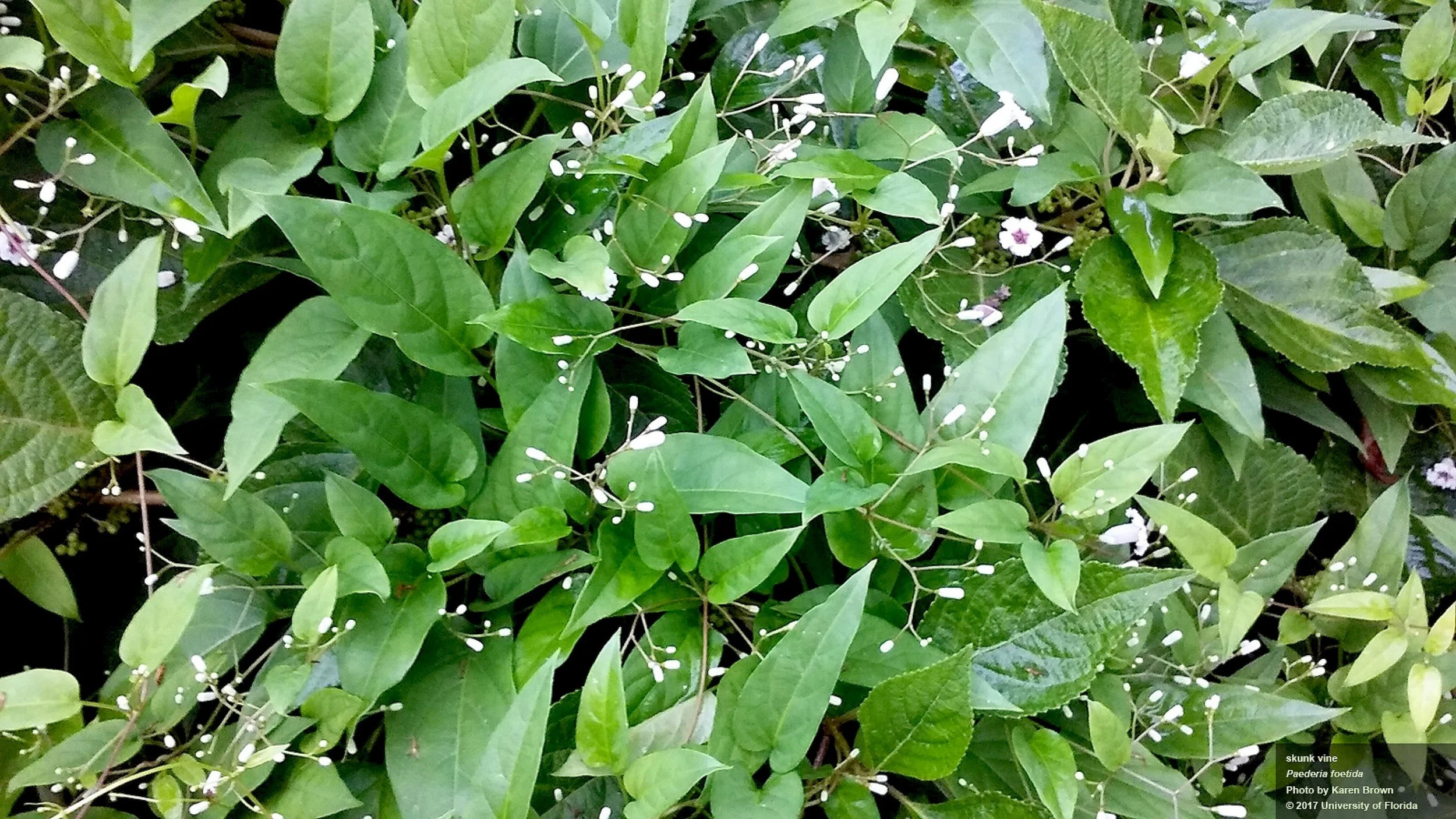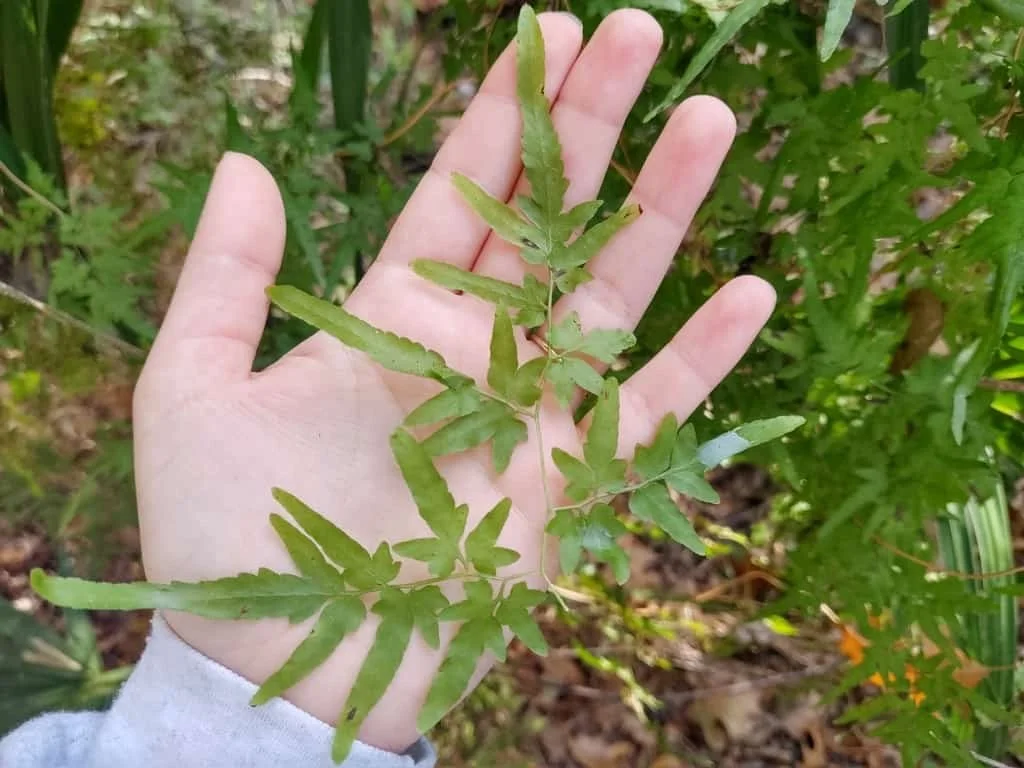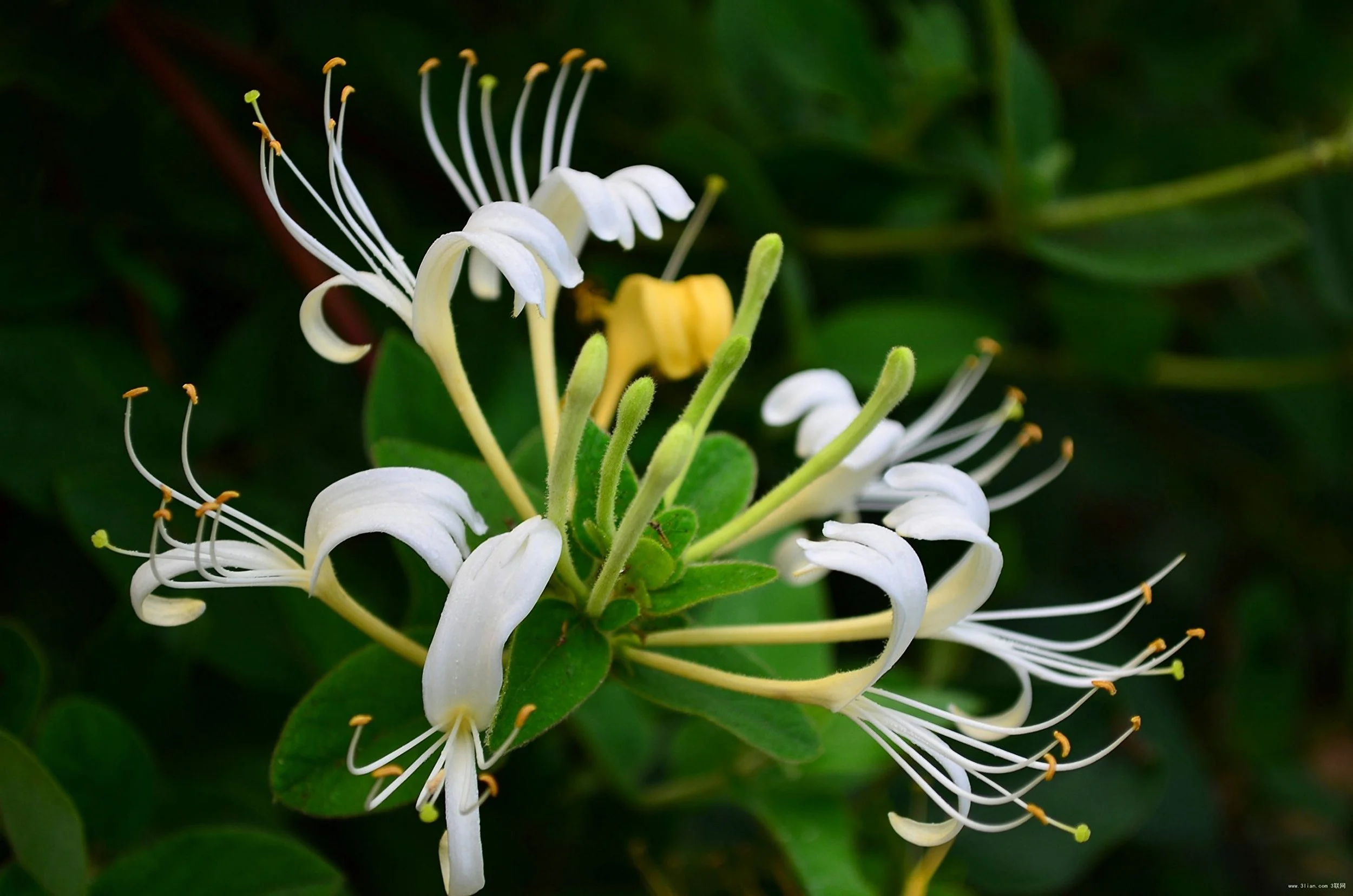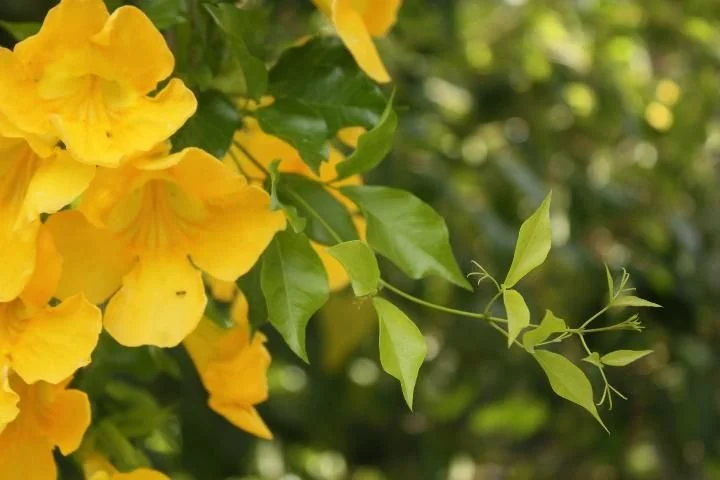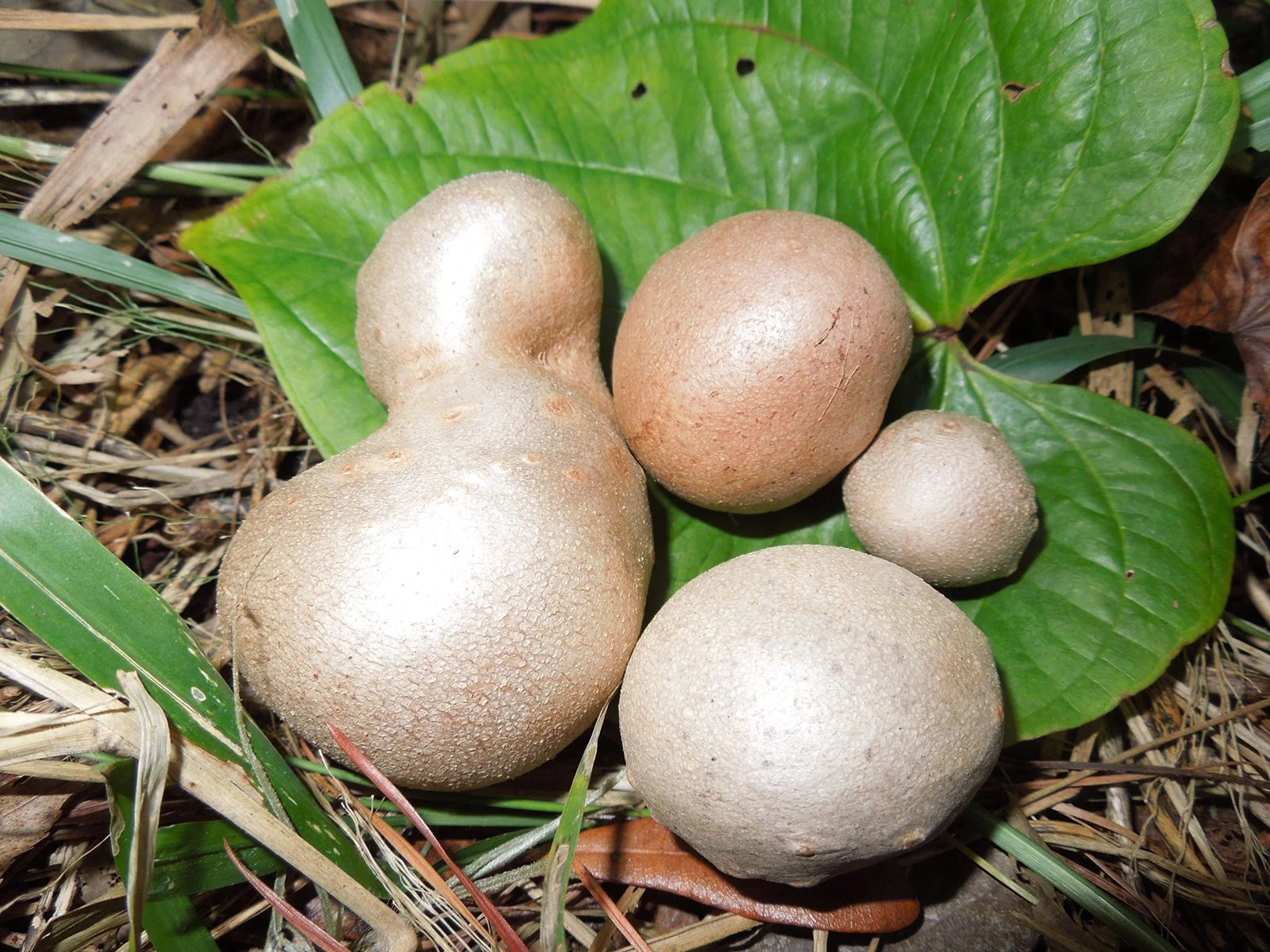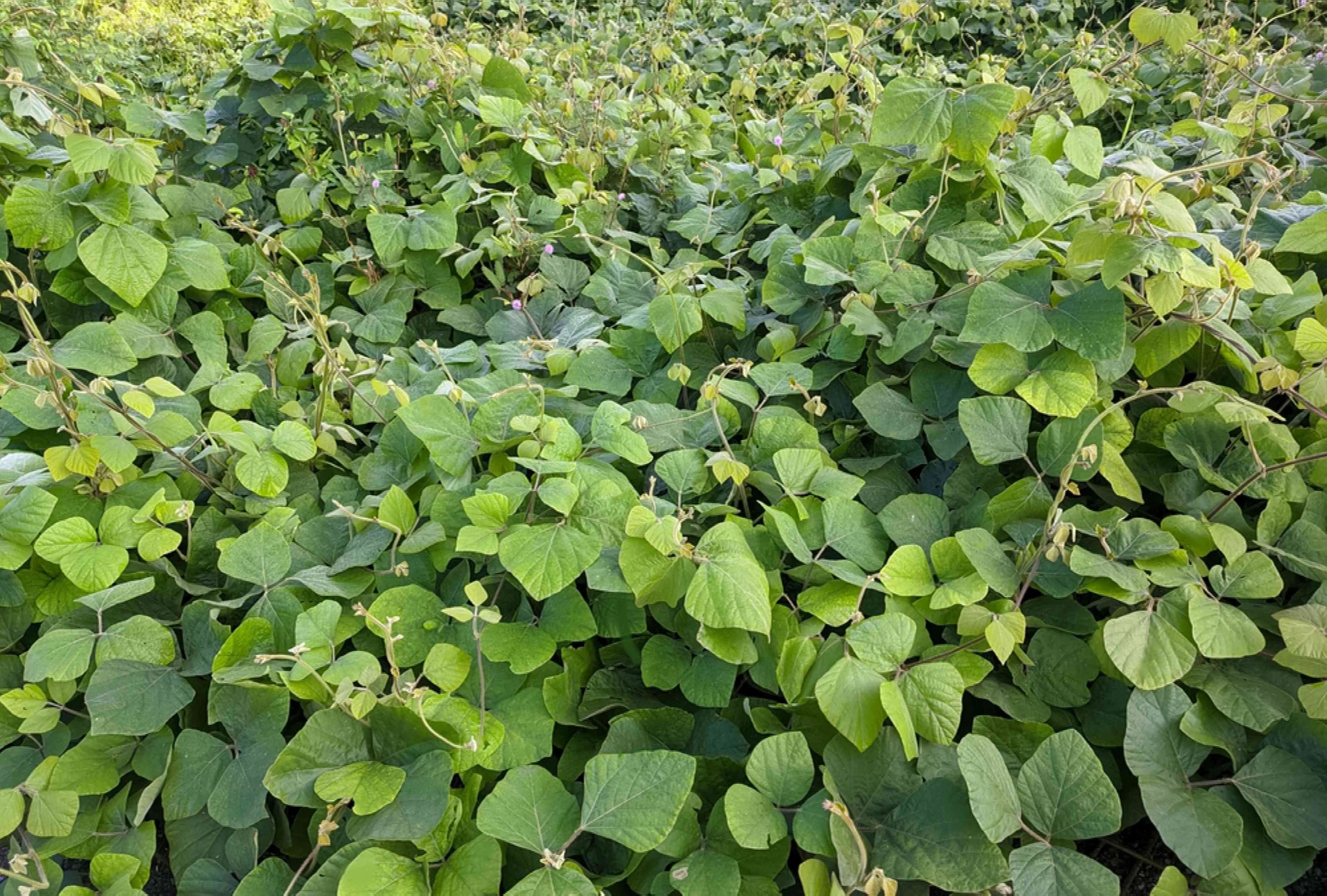Many palms seen in landscapes around town are not native to Florida–some are not even palms at all. Windmill, jelly, Pindo, and fan palms are just a few that do not naturally grow here. The popular Sago palms are actually cycads, a prehistoric clade of plants that are more closely related to pines and yews than they are true palms. Yet, they are also distinct from trees. True palms flower and do not have a woody trunk. If you’ve ever seen the cut stump of a palm, you’ll notice it does not contain the distinct sections as a tree does–there is no outer layer of bark or solid rings that indicate the passing years. There is simply a mass of rough, uniform fiber. This is because palms are structurally more similar to grasses, sharing some of their closest ancestry with grasses, lilies, and onions.
All palms are incredibly tolerant and can adapt to some of the widest ranges of environments. Most are salt tolerant, often found right up against the Gulf or in salt barrens where they are inundated by periodic flooding by ocean water. Their extensive roots help with erosion control on slopes and beaches, while their evergreen foliage can act as a reliable privacy screen or hedgerow.
The fibrous trunk of palms gives them incredible flexibility, making them ideal for areas that have the potential to experience extreme winds, as they bend without breaking. They can take all day, blue-blazing sun but can also be found quietly peppering forest floors where they get little light at all. I have seen them flourish in clay, sand, soils that are poor and dry, soils that are constantly mucky and sulfuric, and everything in between. It’s this resilient nature that sees them planted in some of the harshest landscapes that our state has to offer, both in natural environments and our home habitats.
Despite all this, palms thrive. They flower white- or cream-colored blooms that hang on long flower spikes one to two feet long. These blooms attract a myriad of tiny sweat bees, flower flies, moths, butterflies, and beetles, acting as havens for native pollinators. Their fruits–usually bright orange, black, or both–are a crucial fall source of food for wildlife.
Cabbage palms (Sabal palmetto)
Cabbage palms (Sabal palmetto) also known as swamp cabbage, are the tallest of our native palms reaching heights of 40-50 feet with the potential to mature to 100 feet or more. When Cabbage palms are young, they resemble most other palms in silhouette before they begin their upward climb. The protrusions on the trunks of younger Cabbage palms are called boots, supposedly because the Spanish used them in lieu of shoehorns, and provide excellent miniature niches of habitat for bird nests, air plants, insects and more before they fall off as the palm matures. Early settlers would use the large palm fronds as brooms and foraged the hearts of palms for food.
Bluestem palms (Sabal minor)
Bluestem palms (Sabal minor) are closely related to Cabbage palms but have a very different growth pattern. This palm only reaches five to ten feet in height, giving it its other common name of Dwarf palmetto. It can often be seen on river edges, in floodplains, and swamps preferring the semi-shade of the forest floor or half-sun of a tree line, though it can do well in full sun as well.
Needle palms (Rhapidophyllum hystrix)
Needle palms (Rhapidophyllum hystrix) are much shorter, eventually forming a 6 by 6 foot rounded shrub. As the name suggests, this palm does have 6 to 10 inch long needles at its base and around its trunk. It is one the most elusive of our native palms, yet it has the best cold hardiness–surviving temperatures down to negative fifteen degrees. This is the only palm that has little to no salt tolerance but can handle near to full shade. The foliage of the needle palm is also the most distinct, with narrow-leaved fronds that provide an airy, fan-like texture.
Silver saw palmettos (Serenoa repens)
Saw palmettos (Serenoa repens) have toothed ridges along each leaf stem that can cause a good scrape to any exposed skin if not careful. These are the lowest growing of all our palms, usually ending up around 4 to 6 feet, though their height can vary in different environments. At St. Marks National Wildlife Refuge, it is easy to see one of the most distinctive features of truly mature Saw palmettos–their trunks swim. Instead of growing straight up, saw palmettos grow sideways, their trunks growing many hundreds of feet parallel to the ground, dipping underneath the soil and then reemerging several feet later. This method allows them to form huge colonies by breaking off from and cloning themselves. Running along the middle sandy ridge of Florida are some of the oldest Saw palmettos in existence, estimated to be between 1227-5215 years old. More than 100 bird species, 27 mammals, 25 amphibians, 61 reptiles, and many insects use it as food and habitat. When Saw palmetto extract experienced a boom in popularity for its purported medicinal properties, there was also a spike of people poaching the berries from protected lands, severely impacting bears that rely on palm forage for a chunk of their fattening fall diet.
Not everything about palms in the landscape can be praised. They are slow to grow, often a plant that requires its caretaker to be thinking in years-long terms rather than a few seasons. Adult Cabbage palms can also be rather messy–though it takes a lot to topple one, average winds or sometimes even simple wildlife activity can cause fronds to shake free from the canopy. Yet their versatility and use to our wildlife alone make them a valuable addition to any landscape, acting as a steadfast backdrop or foundation planting. It is undeniable they are a beneficial addition to the landscape, a universal symbol of the state of Florida.
May 2025, Release for the Tallahassee Democrat





